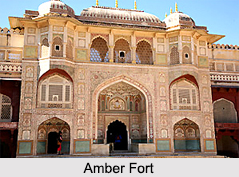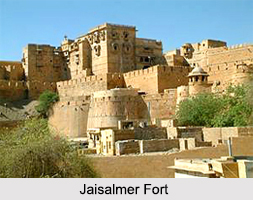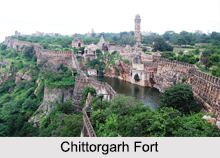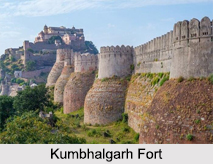 The numerous wonderful monuments are the main attractions of the state of Rajasthan. These monuments include beautiful forts, temples and dargahs. The monuments of Rajasthan are basically Rajput architecture which are entirely different from the Islamic architectures. However, as mentioned above, the architecture of Rajasthan has blended both Hindu and Mughal designs. This royal state has many historical monuments in each and every city.
The numerous wonderful monuments are the main attractions of the state of Rajasthan. These monuments include beautiful forts, temples and dargahs. The monuments of Rajasthan are basically Rajput architecture which are entirely different from the Islamic architectures. However, as mentioned above, the architecture of Rajasthan has blended both Hindu and Mughal designs. This royal state has many historical monuments in each and every city.
Historical significance of the Monuments
Monuments of Rajasthan offer the indication of varied culture, tradition and the great history of Rajasthan. There are nearly 163 monuments of national importance in Rajasthan recognized by ASI. These monuments represent the royal past of Rajasthan. They were built by the Rajput Kings for ruling, security and residential purposes. These monuments represent the romantic mood of different rulers of the bygone era and their architecture ranges from Rajput to Islamic to European style. Some of the famous monuments of Rajasthan are Amber Fort, Hawa Mahal, Mehrangarh Fort, Umaid Bhavan Palace, Chittorgarh Fort, Junagarh Fort, Kuldhara of Jaisalmer, Sonar Kella, Kumbhalgarh fort, Ranthambore Fort, Bundi Qilla, Udaipur City Palace, Jaigarh fort, Nahargarh fort, Gajner palace, Jag mandir, Vijay Stambh, Kirti Stambh, Abhaneri etc.
Hawa Mahal
The Hawa Mahal in Jaipur is a five storeyed monument made of red and pink sandstone. It has been constructed wonderfully in typical Rajput style for the royal ladies to watch the processions without being seen to maintain the Purdah System. This palace has 953 small casemates with small balconies and arched roofs. Each area has been constructed with lattice work, elegantly moulded and carved.
Amber Fort
Amber Fort is one of the most beautiful monuments in Rajasthan. It is situated almost 11 kilometers away from City of Jaipur, on a scenic hill. Started in 1592 by Raja Man Singh I, it was completed by Sawai Jai Singh. The beautiful palace complex was the main residence of Maharajas for many centuries. It is a colossal fort, a fine example of medieval Rajput style of architecture. It is constructed by white marble and red sandstone. This palace consists of several attractions like Jai Mandir, Zenana (palace for women), Sukh Niwas, Shila Devi Temple and Diwan-e-aam.
 Sonar Quila in Jaisalmer
Sonar Quila in Jaisalmer
Standing amidst the Great Thar Desert, this fort is a UNESCO World Heritage Site. The Golden Fort, Jailsalmer Fort or Sonar Quila was built in 1156 by Rawal Jaisal, a Bhati Rajput. It consists of residential complexes and havelis. It is one of the largest residential forts with one-fourth of the old city"s population still residing. Gorgeous balconies, sculptures, screened windows all represent the superb architectural style. The colour of the fort comes from the massive yellow sandstone walls. During daytime, the fort seems to be of lion colour which fades down to honey-gold with the sunset, thus, camouflaging the fort in the desert. This is the main reason why the Jaisalmer Fort is known as the Sonar Quila or Golden Fort. The famous director Satyajit Ray wrote the "Sonar Kella", a world-famous detective novel, based on this fort. He even filmed the story here.
 Chittor Fort
Chittor Fort
The Chittor Fort or Chittorgarh is one of the largest forts in India and a UNESCO World Heritage Site. The fort was the capital of Mewar. Starting from the 7th century, the fort was controlled by the Mewar Kingdom. From the 9th to 13th centuries, the fort was ruled by Paramara dynasty. In the year 1303, the ruler of Delhi, Alauddin Khalji defeated Rana Ratan Singh`s forces at the premises of the fort. In 1535 Bahadur Shah of Gujarat defeated Bikramjeet Singh and captured the fort. In 1567 Akbar defeated Maharana Udai Singh ll. After these defeats, the defenders committed "Saka". They would purposely march to the battlefield expecting death; while the women are said to have committed "Jauhar" or mass self-immolation.
Rani Padmini`s Palace, a white building and a three storied structure, is located in the southern part of the fort. According to legends, it is at this Palace where Alauddin Khilji was a glimpse of a mirror image of Rani Padmini, wife of Maharana Ratan Singh. This glimpse convinced him to destroy Chittor with the aim to possess her. Maharana Rattan Singh was killed following a battle with Khilji and Rani Padmini allegedly committed Jauhar. The fictional story of Padmini became inspiration for "Padmavat", an epic poem by Malik Muhammad Jayasi in 1540.
Junagarh Fort
Junagarh Fort stands as a testimony for grand Rajputana architecture. Until the 20th century, this magnificent fort was known as Chintamani Mahal. This fort was built by Raja Rai Singh in 1588, in the heart of the Bikaner City. Even after multiple attacks, the Fort still remains intact. The Diwan-e-Khaas, Diwan-e-Aam, the Zenana Khana, Royal Harem and the King"s palace add to the marvelous architecture of this fort.
Mehrangarh Fort
The Mehrangarh Fort is situated in Jodhpur at an altitude of around 400 meters above the city skylines on a rocky cliff. Spread over an area of around 5 km, the Fort was built by Rao Jodha in 1459. There are seven gates to enter the Fort and each of them was constructed by different rulers. The gates were built in honor of the victory over Jaipur and Bikaner armies. The Moti Mahal, Sheesh Mahal, Takht Vilas, Jhanki Mahal and Zenana display the architectural heritage of Rajasthan.
Umaid Bhavan Palace
This royal palace was built by Maharaja Umaid Singh of Rathore Dynasty. The Umaid Bhavan is one of the largest private residences in the world. This royal residence has a Durbar Hall, a large private meeting hall, a banquet hall, a throne chamber and a ballroom in addition to 347 rooms, and private dining halls. The Palace is divided into three parts, the residence of the royal family, a luxury Taj Palace Hotel and a Museum on the history of Jodhpur Royal Family.
 Kumbhalgarh Fort
Kumbhalgarh Fort
Kumbalgarh Fort, located in Rajsamand is famous for its breathtaking architecture and history. This fort is the birthplace of Maharana Pratap, the legendary king of Mewar. It is situated on the foothills of Aravalli Ranges. It was built in the 15th century by Rana Kumbha and is a UNESCO World Heritage Site. It is one of the largest fort complexes in the world, and the second largest fort in India after the Chittor Fort. A grand thick wall of about 15 kilometers long surrounds this fort. It is the second longest wall in the world after the "Great Wall of China". The Kumbhalgarh lies in the middle of the Kumbhalgarh National Park, which is home to wide varieties of flora and fauna including several endangered species. Visitors can spot leopards, panthers, Neelgai, Sambhars, hyena, wolf, bear, boars, crocodiles and peacocks here.
Ranthambore Fort
Ranthambore Fort lies within the Ranthambore National Park in the town of Sawai Madhopur (from Maharaja Sawai Madho Singh). The park was the former hunting ground of Maharajas of Jaipur. The fort is a UNESCO World Heritage Site under the group of Hill Forts of Rajasthan. Built in the 10th century, the mighty fort of Ranthambore has seen an immense number of attacks and conquests. The fort was a major barrier for the invaders because of the wildlife surrounding the fort and its well-planned construction.
Dilwara Jain Temple
Dilwara Jain Temple in Mount Abu is a heritage site. This temple complex consists of five temples, Shri Mahaveer Swami Temple, Shri Adi Nath Temple, Shri Parshav Nath Temple, Shri Rishabdaoji Temple and Shri Nemi Nath Ji Temple. The temples are dedicated to the Tirthankaras or Jain saints. These Temples dates back to 11th and 13th century AD and was built at different times by different people.
Rajasthan is one of the most magnificent and historically rich states in India. There are plenty of nationally protected heritage sites in Rajasthan. Most of them reflect the wealthy culture and the glorious history of the city and of India as well.



















